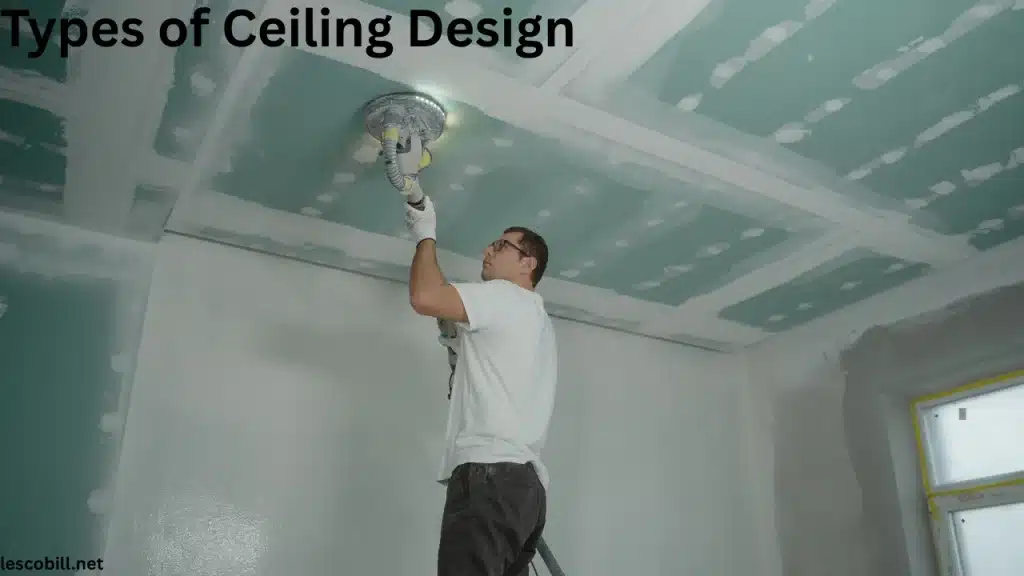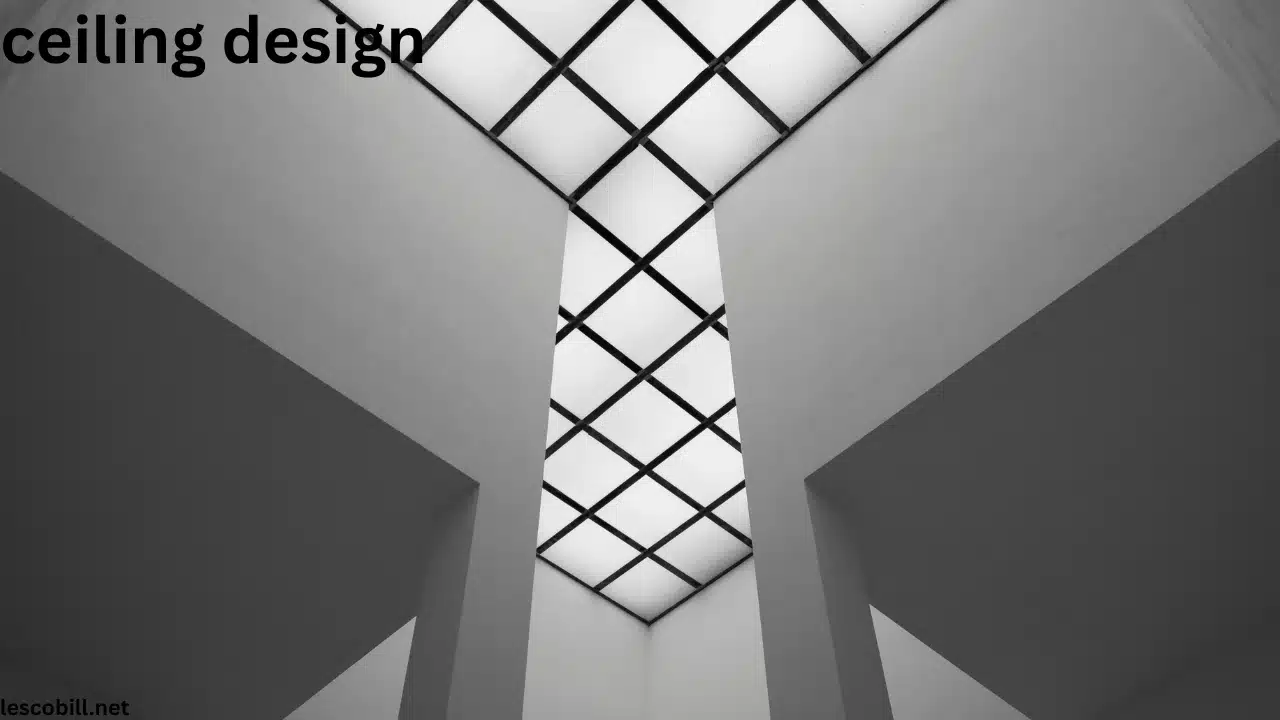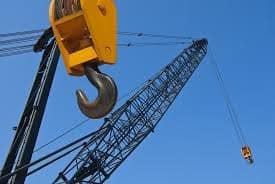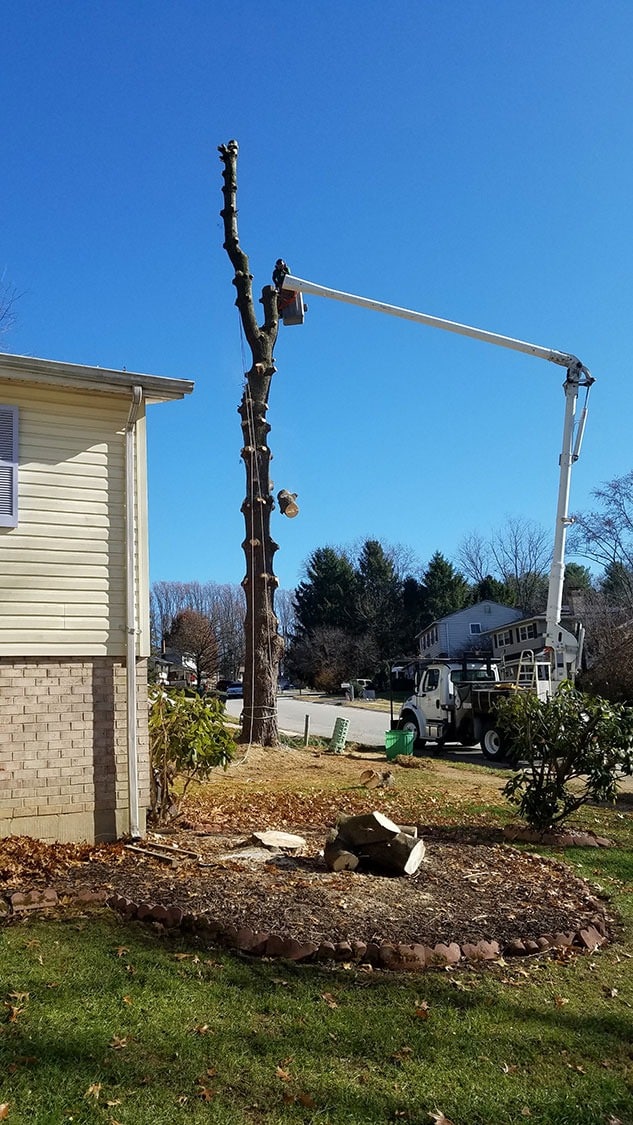Ceiling design is one of the most overlooked but powerful aspects of interior design. While walls, floors, and furniture often get the most attention, the ceiling—also known as the fifth wall—has the ability to completely change the feel and function of a room.
Whether you’re planning a renovation or starting from scratch, a thoughtful ceiling design can add depth, style, and purpose to any space. The right choice in textures, materials, colors, and lighting creates a room that feels complete. This guide will walk you through everything you need to know about ceiling design, including ideas, styles, trends, and practical tips.
You May Like: happy teachers day
Why Ceiling Design is Important
A great ceiling design goes beyond aesthetics. It serves both functional and decorative purposes. In modern homes, ceilings help control lighting, temperature, and acoustics. They can also be used to hide wiring, plumbing, or structural components.
Ceilings also create visual balance. A dark or textured ceiling can make a large space feel cozier, while a light or glossy ceiling can make a small room feel bigger. With so many roles to play, the ceiling deserves as much planning as any other part of your home.
Types of Ceiling Design

Ceiling Design with Flat Ceilings
Flat ceilings are the most common and versatile ceiling design. They are clean, simple, and suitable for all kinds of homes. Because they’re easy to install and maintain, flat ceilings are often found in bedrooms, kitchens, and offices.
Flat ceilings also provide the perfect surface for painting, wallpaper, or recessed lighting. You can even add texture with paint techniques or plaster patterns.
Ceiling Design Using Vaulted Ceilings
Vaulted ceilings slope upwards, creating a feeling of openness and luxury. These ceilings are often seen in large living rooms or entryways. They make rooms feel bigger and allow for larger windows, letting in more natural light.
If you want your home to have a grand appearance, vaulted ceiling design is a great choice. You can also add wood beams or panels for warmth and character.
Ceiling Design with Tray Ceilings
Tray ceilings are made by creating a central recessed section above the main ceiling level. They add depth and interest to a room without needing to raise the entire ceiling.
This type of ceiling design is often used in dining rooms, living areas, and bedrooms. You can enhance the tray ceiling with cove lighting, molding, or paint to emphasize its layers.
Ceiling Design Featuring Coffered Ceilings
Coffered ceilings consist of a grid pattern of recessed squares or rectangles. This classic ceiling design adds elegance and symmetry to a room.
Coffered ceilings work well in formal dining areas, home libraries, or offices. You can paint the grids and recesses in different tones to create contrast and depth.
Ceiling Design Using Wood
Wood ceilings add a warm, natural feel to any room. You can use stained planks, tongue-and-groove boards, or exposed beams depending on your style.
Rustic homes often use raw wood finishes, while modern homes may feature cleaner wood panel designs. Wood works well in living rooms, attics, and even bathrooms if sealed properly.
Ceiling Design with Plaster and Decorative Moldings
Ornate ceilings made of plaster or gypsum are perfect for classical or vintage-style interiors. You can include crown moldings, medallions, or cornices for extra detail.
Plaster ceilings look great in formal spaces like drawing rooms and ballrooms. They can also be painted or gilded to match your theme.
Ceiling Design Using PVC and Gypsum Panels
Modern homes frequently use PVC or gypsum board ceilings. These materials are lightweight, easy to install, and offer a smooth finish. They are ideal for creating false ceilings that conceal wires or ducts.
They can also be used to install recessed lights or cove lighting. PVC is water-resistant, making it ideal for bathrooms and kitchens.
Ceiling Design with Metal Tiles
Metal ceilings are inspired by vintage styles but are making a comeback in modern homes. Available in tin, copper, or aluminum, these tiles add texture and reflect light beautifully.
Metal ceilings are easy to clean and can give a space an industrial or retro vibe. They work well in kitchens, bars, or entryways.
Ceiling Design Using Paint and Wallpaper
Painted ceilings are an affordable and creative way to add personality. You can use bold colors, stripes, or patterns to make a statement. High-gloss finishes reflect light and make the ceiling stand out.
Wallpapered ceilings are another design trick that’s gaining popularity. Whether floral, geometric, or textured, wallpaper adds charm and interest to the fifth wall.
Ceiling Design with Lighting Features
Lighting is a big part of ceiling design. From chandeliers and pendant lights to LED strips and recessed lighting, the right fixtures enhance both the beauty and functionality of the ceiling.
Cove lighting, which is hidden within ceiling recesses, adds a soft glow and can highlight the shape of tray or coffered ceilings.
How to Choose the Right Ceiling Design
Know Your Ceiling Height
The height of your ceiling can limit or expand your options. Low ceilings may benefit from flat or painted designs, while high ceilings allow for beams, moldings, and dramatic slopes.
Consider the Room’s Function
Every room has a purpose. For instance, bedrooms require a calming atmosphere, so choose soft textures and subtle lighting. Kitchens need practical ceilings that are easy to clean. Living rooms can afford a bit more drama with tray, coffered, or vaulted designs.
Balance Style and Maintenance
Some ceiling designs require more maintenance than others. Wood may need polishing; painted ceilings may need touch-ups; moldings may gather dust. Choose a design you can realistically care for.
Stick to Your Budget
Some materials and designs can be costly. Coffered ceilings, wood beams, or custom plasterwork involve professional installation. If your budget is limited, go for simpler options like paint, panels, or wallpaper.
Think About Acoustics
Ceilings can affect sound in a room. Vaulted or tall ceilings may cause echoes. Materials like fabric panels or wood can help absorb sound. Acoustic ceiling tiles are also available for better noise control.
Popular Ceiling Design Trends
Bold Colors
Homeowners are increasingly painting ceilings with bold, moody colors—navy blue, charcoal, or emerald green. These colors add depth and personality.
Gloss Finishes
Glossy ceilings reflect light and make rooms feel more open. They pair well with modern or luxury themes.
Natural Materials
Wood, stone, or bamboo ceilings are gaining popularity. They create a calming, earthy atmosphere and suit both rustic and modern homes.
Minimalist Designs
Clean lines, smooth surfaces, and integrated lighting are perfect for minimalists. Simple gypsum or PVC panels offer functionality with style.
Statement Lighting
Chandeliers, sculptural pendants, and LED arrangements turn the ceiling into a focal point. Lighting now plays a central role in ceiling design.
Ceiling Design for Each Room
- Living Room: Use coffered or tray ceilings with statement lighting to draw attention.
- Bedroom: Go for a calm ceiling design with soft colors or recessed lighting.
- Kitchen: Choose easy-to-clean materials like PVC or painted surfaces.
- Bathroom: Moisture-resistant ceilings like stretch PVC or tiles work best.
- Dining Room: Tray ceilings with chandeliers create an elegant feel.
- Office: Acoustic tiles or wood panels keep sound under control.
Quick Ceiling Design Tips
- Paint ceilings a lighter color to make the room feel taller.
- Use wallpaper to create drama without high costs.
- Install LED cove lighting for soft, ambient light.
- Add a ceiling medallion to highlight a light fixture.
- Use exposed beams to bring rustic charm.
- Choose matte finishes for a cozy, grounded feel.
Benefits of a Well-Designed Ceiling
- Enhances room aesthetics
- Improves lighting effects
- Increases property value
- Adds comfort and character
- Provides space for hidden utilities
- Balances sound and acoustics
Maintenance Tips for Ceiling Design
Regular cleaning is important, especially for textured or decorated ceilings. Dust ceiling fans and moldings. Check for cracks, stains, or water damage. Repaint or reseal when necessary.
For wood or metal ceilings, polish them every few months. For wallpapered ceilings, use a soft cloth or vacuum attachment to remove dust.
Frequently Asked Question
What are the most common types of ceiling design?
The most common types include flat, tray, coffered, vaulted, and false ceilings. Each offers a unique look and can suit different spaces and budgets.
Which ceiling design is best for modern homes?
Tray ceilings with recessed lighting or PVC false ceilings are ideal for modern homes. They provide clean lines and allow for smart lighting integration.
How does ceiling design affect room acoustics?
Ceiling design can absorb or reflect sound. Materials like wood and acoustic panels reduce echo, making spaces quieter and more comfortable.
Can ceiling design help improve lighting?
Yes, ceiling design can enhance both natural and artificial lighting. Using gloss paint, light colors, or cove lighting improves brightness and ambiance.
Is a false ceiling good for small rooms?
False ceilings can work well in small rooms if done minimally. Choose slim designs with built-in lighting to save space and add elegance.
Final Thoughts on Ceiling Design
ceiling design is much more than an overhead surface. It’s an essential part of any room’s overall style and function. Whether you prefer clean modern lines, traditional elegance, or rustic warmth, there’s a ceiling design to match your vision.
From paint and paneling to lighting and moldings, the options are nearly endless. Always choose a design that suits your space, meets your functional needs, and aligns with your personal taste.
When done right, ceiling design not only improves how a room looks but also how it feels. With smart choices and a little creativity, your ceiling can become one of your home’s most beautiful features.
People Also Read: wabetainfo news



